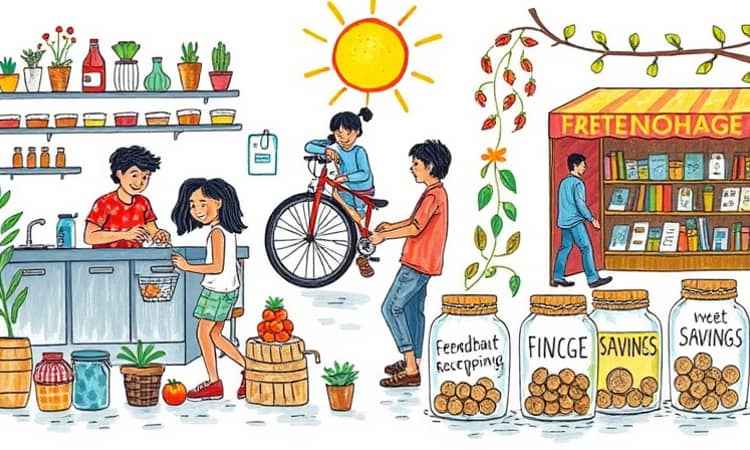In 2025, with economic uncertainty looming and living costs soaring, adopting frugal living has become more than a trend—it’s a necessity. By embracing mindful spending, you can build resilience, reduce stress, and secure your financial future.
Frugal living often gets mistaken for mere penny-pinching, but it goes deeper. It’s about intentional, value-focused decision-making for lasting financial impact that empowers households to thrive despite external pressures.
What Is Frugal Living? Intentionality vs. Deprivation
Frugality is often misconstrued as deprivation, but the key difference lies in mindset. While being cheap might sacrifice quality and comfort, true frugal living centers on maximizing satisfaction per dollar spent.
At its core, frugality means evaluating every purchase through the lens of long-term benefits and resourcefulness. It encourages consumers to prioritize investments that deliver ongoing value rather than fleeting pleasure.
Why Frugality Matters Now: The Economic Case in 2025
The economic backdrop of 2025 is defined by persistent inflation, rising tariffs, and a severe housing shortage. A recent survey found that 81% of Americans are concerned about tariffs’ impact, while 42% list inflation as their top worry.
- Households overspend by more than $300 per month on non-essentials.
- 75% of consumers have “traded down” to cheaper brands or smaller quantities.
- There is a shortfall of 7.1 million homes for the lowest-income renters.
These trends highlight the urgency to adopt frugal habits that offer both immediate relief and long-term financial security.
Ten Proven Frugal Habits for Modern Households
Adopting frugal strategies can transform your financial landscape. Consistency is critical; start with a few tactics and expand your toolkit over time.
- Automate Savings: Set up apps to transfer a portion of each paycheck directly into savings, reduce reliance on pure willpower and build a cushion effortlessly.
- Meal Planning & Prep: Plan weekly menus, shop with a list, and cook in batches to save $200–$400 per month on groceries.
- Learn high-value do-it-yourself tasks: Master basic repairs for home and auto maintenance, yet know when to call professionals.
- Shop Secondhand: Purchase furniture, clothing, and household goods used to snag 50–80% discounts off retail prices.
- Use Free Resources & Community Assets: Leverage public libraries, free digital content, and local events for cost-free entertainment and education.
- Travel & Transportation: Opt for carpooling, public transit, or biking to slash commuting costs significantly.
- Subscription Audit: Review recurring services quarterly; cancel underused subscriptions and consider rotating your subscriptions to maximize value.
- Rent/Monetize Assets: Rent spare rooms or equipment, and explore side gigs to supplement your income.
- Emergency Fund: Build a safety net equal to three to six months of expenses to prevent debt during unforeseen events.
Frugality and Wellbeing: More Than Just a Budget
Beyond financial gains, adopting frugal habits can boost mental health. When you live within your means, you reduce financial stress and cultivate a sense of control over your life.
Community bonds often strengthen as families and neighbors share resources, activities, and support. Simple gatherings, potlucks, and shared hobbies can foster joy without high costs.
Moreover, the satisfaction of achieving goals—like hitting a savings target or successfully completing a DIY project—builds confidence and reinforces positive behaviors.
Generational Trends and Adaptations
Frugal practices vary across age groups. Baby Boomers lead the pack: only 20% plan to increase discretionary spending, compared to 50% of Millennials focused on travel or jewelry.
Lower-income households are most aggressive in trading down, with 51% choosing cheaper meat and dairy options this year. However, private-label consumption is up across all income brackets as consumers respond to inflation.
- High-income Millennials: Spend selectively on experiences, while cutting essentials like groceries.
- Gen Z: Embrace thrifting and resale platforms for fashion bargains and unique finds.
- Gen X: Balance quality and cost by evaluating Total Cost of Ownership vs Purchase to guide durable goods investments.
Building Your Frugal Blueprint: Step-by-Step Guidance
Creating a personalized plan ensures sustainable progress. Follow these steps:
Consistency and adaptation are crucial. As you progress, revisit your plan quarterly to fine-tune and adjust goals.
Conclusion: Your Path to Financial Freedom
Frugal living is not about sacrifice; it’s about empowerment. By making intentional spending choices that align with your priorities, you safeguard against economic uncertainty and build a foundation for lasting wealth.
Start today: pick a few strategies, track your results, and celebrate each milestone. Over time, gradual habit changes yield compounding benefits that transform your financial outlook and enrich your life.
Embrace the art of frugal living and unlock a future of greater security, freedom, and peace of mind.














